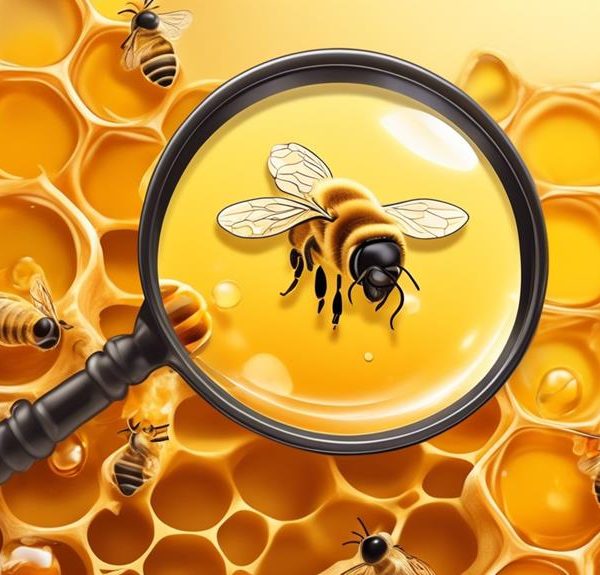Buzz into the fascinating world of honey and uncover the surprising secret of enzymes hidden within its sweet allure.
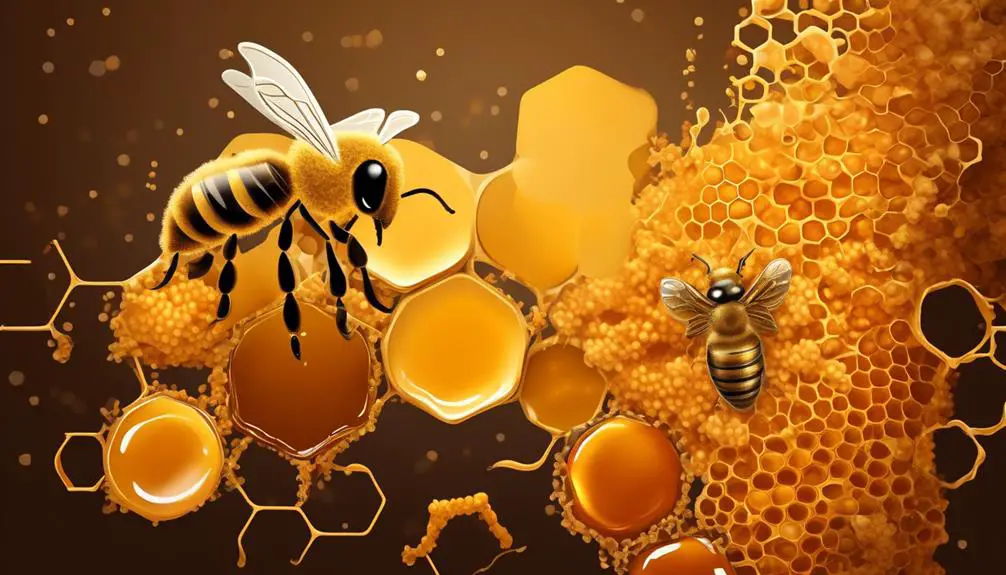
Are There Enzymes in Honey
You've likely heard the old adage, 'you catch more flies with honey than vinegar.' But have you ever taken a moment to consider what's actually in that sweet, sticky substance that's so attractive to those pesky insects?
Well, the answer might surprise you. Honey isn't just a simple sugar solution, it's a complex substance filled with a variety of compounds, including enzymes.
Now, you might be wondering, 'What are enzymes doing in my honey?' A valid question, indeed, and one that we'll explore further, unraveling the mystery that surrounds this golden nectar.
Key Takeaways
- Enzymes in honey, such as invertase and diastase, contribute to its antibacterial and antioxidant properties.
- Raw honey is preferred for health benefits as heat can destroy enzymes that provide various health benefits.
- Invertase breaks down sucrose into glucose and fructose, aiding in digestion and preserving honey.
- Proper storage of honey is essential to preserve enzymes, including avoiding high temperatures, direct sunlight, and excessive moisture.
Understanding Enzymes in Honey
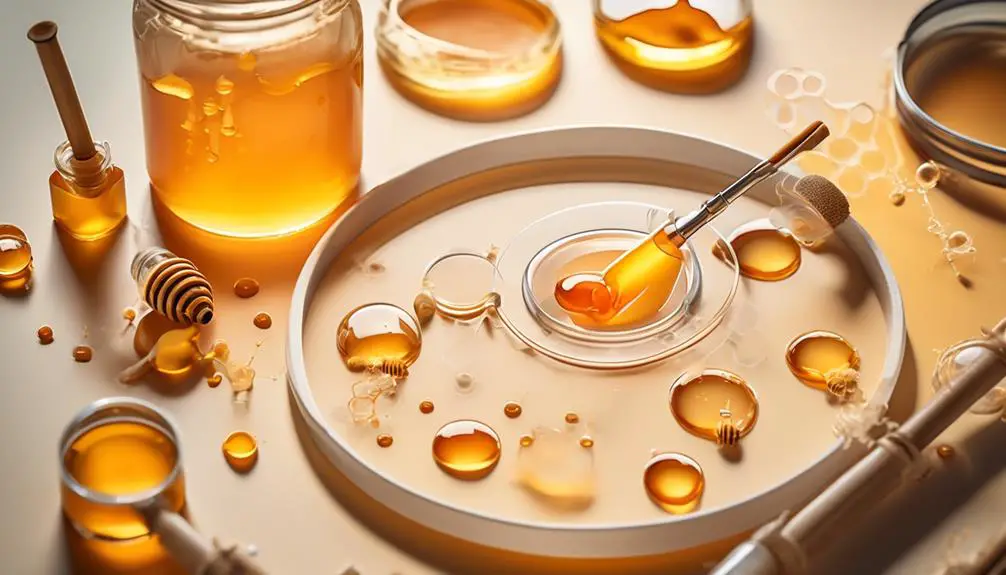
Have you ever wondered about the role of enzymes in honey and their impact on its myriad benefits? Understanding this is crucial to appreciate honey's health-promoting properties.
Enzymes are proteins that facilitate biochemical reactions. In honey, they're introduced by bees during the honey-making process. Two primary enzymes in honey are invertase and diastase. Invertase breaks down sucrose into glucose and fructose, which gives honey its sweetness and aids in digestion. Diastase, on the other hand, breaks down starches into simpler sugars.
However, the enzyme content varies depending on the honey's floral source and the bees that produced it. This explains why different types of honey have distinct flavors, colors, and health benefits.
Enzymes in honey also contribute to its antibacterial and antioxidant properties. Glucose oxidase, another enzyme found in honey, produces hydrogen peroxide, a well-known disinfectant. This makes honey a natural wound healer.
Lastly, remember that heat can destroy these enzymes. So, if you're looking for the health boost, raw honey is your best bet. It's not just a sweetener, but a complex and beneficial product of nature, thanks in part to its enzyme content.
Key Enzymes Found in Honey
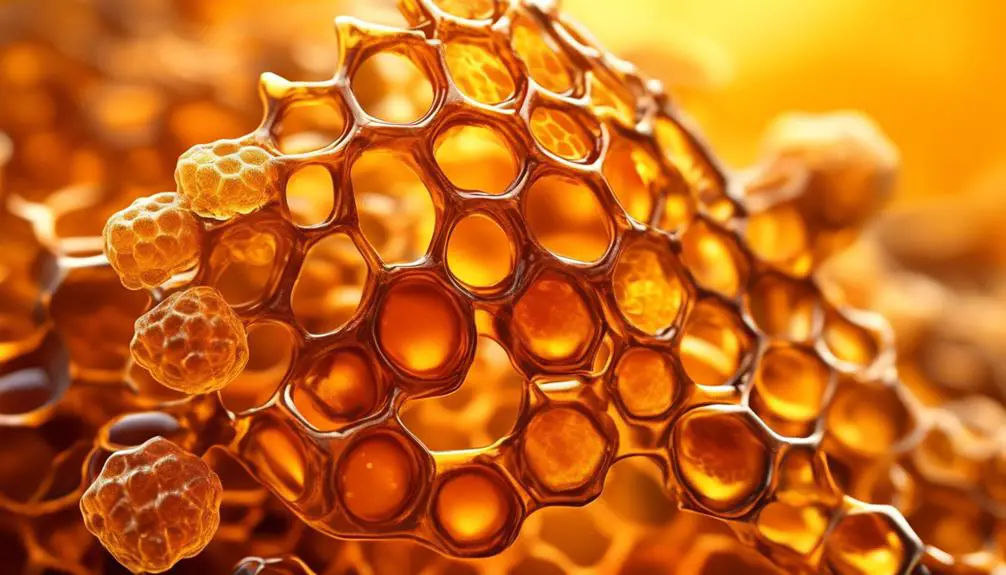
Let's delve deeper into the three crucial enzymes found in honey: invertase, diastase, and glucose oxidase, each playing a unique role in honey's nutritional profile and health benefits.
Invertase works by breaking down the nectar's sucrose into glucose and fructose, the two primary sugars in honey. This process not only sweetens the honey but also helps in preserving it.
Diastase, on the other hand, breaks down starch into maltose and dextrins. It's crucial in maintaining honey's freshness, and its level can indicate the quality of honey – the higher the diastase level, the fresher the honey.
Lastly, glucose oxidase plays a role in honey's antibacterial properties. It breaks down glucose into hydrogen peroxide, a natural antiseptic. This enzyme is inactive in ripe honey but springs into action when diluted, as in a wound or throat, making honey a natural remedy for wounds and sore throats.
In essence, these enzymes aren't just chemical workers but also contribute to honey's therapeutic benefits. Understanding them gives you a clearer picture of why honey is more than just a sweet treat – it's a powerhouse of health benefits.
Health Benefits of Honey Enzymes

Delving into the health benefits of honey enzymes, you'll discover their instrumental role in various therapeutic applications, from wound healing to digestive health. These enzymes, such as invertase, diastase, and glucose oxidase, are naturally present in honey and offer unique health benefits.
Honey Enzyme | Health Benefit |
|---|---|
Invertase | Helps in digestion by breaking down sucrose into glucose and fructose |
Diastase | Aids in the breakdown of starch into maltose, improving digestion |
Glucose Oxidase | Converts glucose to hydrogen peroxide, providing antibacterial benefits |
Catalase | Protects cells from oxidative damage |
Amylase | Assists in the digestion of carbohydrates |
You'll find that honey isn't just a sweet treat. It's packed with enzymes that support your body's natural functions. For instance, the enzyme invertase aids in digestion, while glucose oxidase provides antibacterial benefits. Diastase, catalase, and amylase also play significant roles in promoting digestive health, protecting cells, and breaking down carbohydrates. It's clear that the enzymes in honey contribute substantially to its health-promoting properties, making it more than just a simple sweetener.
Effects of Processing on Honey Enzymes
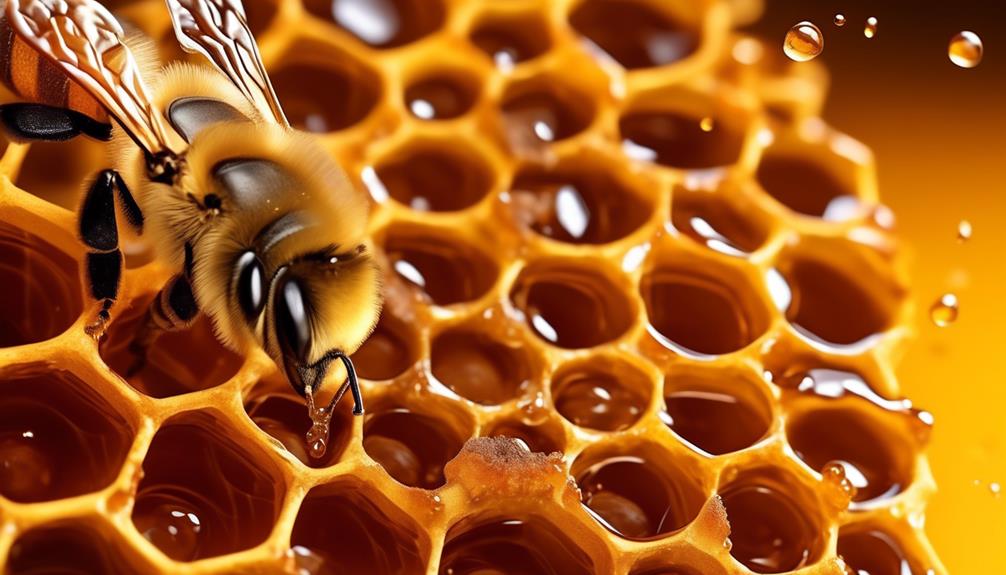
While enjoying the health benefits of honey's naturally occurring enzymes, it's crucial to consider how various processing methods can impact their potency and effectiveness. You need to understand that all honey isn't created equal and processing plays a significant role in this.
Raw honey is the most beneficial as it contains all the naturally occurring enzymes. However, most commercial honey undergoes a process called pasteurization. This process involves heating the honey to high temperatures to kill off any yeast cells and prevent fermentation, thereby extending its shelf life. But, it also destroys many of the beneficial enzymes and other nutrients.
Another common processing method is ultrafiltration, which removes tiny particles and pollen. While it creates a clear, smooth product, it can also remove beneficial enzymes.
Even the way honey is stored can affect its enzyme content. Exposure to heat and light can degrade the enzymes, reducing their effectiveness over time.
Proper Storage for Enzyme Preservation
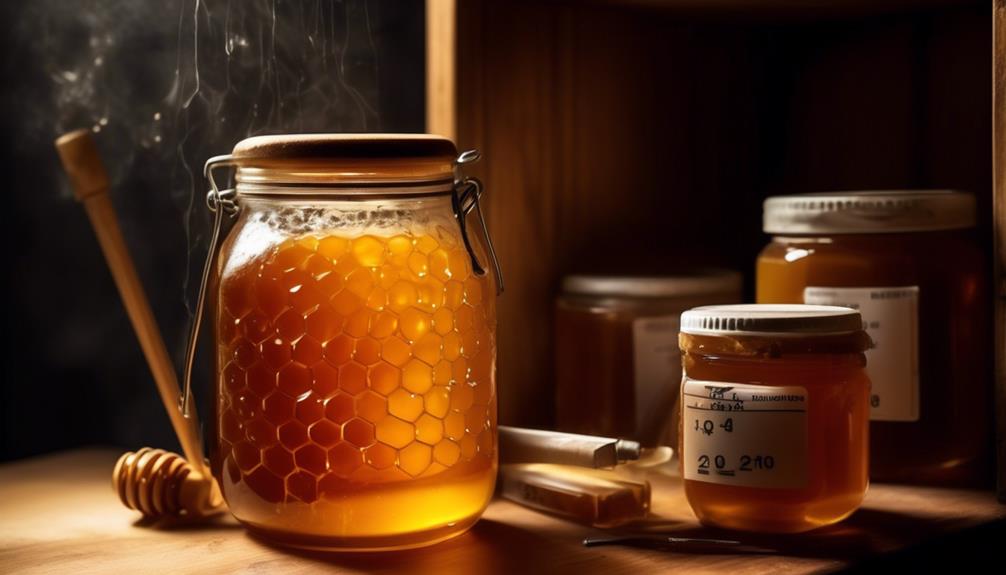
To preserve the powerful enzymes in honey, it's essential to store it properly. Understanding the best conditions for storage can significantly enhance its longevity and potency.
Here is a simple yet effective storage guide:
Storage Condition | Effect on Honey Enzymes | Recommendation |
|---|---|---|
Temperature | High temperatures can denature enzymes, reducing their effectiveness | Store at room temperature |
Light Exposure | Direct sunlight can degrade enzymes | Store in a dark place |
Moisture | Excessive moisture can dilute honey and affect enzyme activity | Store in a dry place |
You must avoid high temperatures as they can denature enzymes, reducing their effectiveness. Room temperature is ideal. Direct sunlight can degrade enzymes, so a dark place is best for storage.
Avoid storing honey in damp areas as excessive moisture can dilute it, affecting enzyme activity. Always ensure that the container is sealed tightly to prevent moisture ingress.
Conclusion
Indeed, honey is packed with enzymes like invertase, diastase, and glucose oxidase, offering numerous health benefits. However, improper processing can diminish these beneficial compounds. So, it's crucial to opt for raw, unprocessed honey.
Remember, proper storage is also key to preserving honey's enzymatic qualities. In essence, understanding and appreciating the presence of enzymes in honey can enhance your overall wellness journey.


